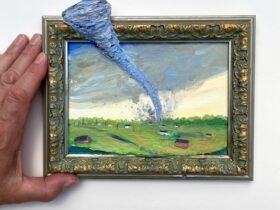What does caricature mean?
Caricature is a technique used in drawing, painting or illustrating exaggerates certain features of a subject to create a similarity often humorous or satirical. It is derived from the Italian word ‘caricare’, which means ‘to charge’ or ‘to exaggerate’. This art form emphasizes distinctive features to the extreme, either to mock or celebrate the subject.

Is caricature positive or negative?
Can be a caricature both positive and negativedepending on the artist’s intention. It is often used in satire and political commentary, which can be biting and critical. However, caricatures are also common in entertainment and celebrations, where they serve as loving tributes.
What is the basic rule of caricature?
The basic rule of caricatures is to exaggerate the most distinguishing features while maintaining recognizability and expressing something fundamental about the subject. It is about finding the essence of the subject and amplifying it without resorting to distortion that loses all similarity.
How to caricature someone?
Caricaturing someone involves keen observation of their most striking features and exaggerating them in a drawing or sculpture. Here’s how to get started:
- Observe and note: Identify the person’s most distinguishing characteristics. It could be a big nose, clear smile lines or prominent eyes.
- Exaggerate wisely: Choose which features you want to exaggerate without losing the relatability of the subject. This balance is crucial for an effective caricature.
- Sketch and refine: Start with a rough sketch, focusing on the exaggerated features. Refine your drawing to improve its similarity and expression.
- Add personality: Add elements that reflect the individual’s personality or well-known traits, which can increase the impact of the caricature.
Is caricature a form of art?
Absolute! Caricature is a respected form of artistic expression that requires skill and insight. Recognized in both the visual arts and popular culture, it bridges the gap between serious artistic study and accessible public media.

How is caricature used?
Caricature has several uses:
- Editorial cartoons: Used in newspapers and magazines to comment on political or social events.
- Entertainment: Working in films, shows and animations for character development and humor.
- Celebrity portraits: Popular in media and publications for portraying celebrities in a humorous light.
- Gifts and souvenirs: Personalized caricatures are common gifts that capture the essence of a person in a fun way.
Discussing caricature ethics
Discussing the ethics of caricature is vital, given its powerful impact on public perception and discourse. Here are some important ethical considerations:
Intention and impact
The intention behind creating a caricature is crucial. Artists often walk the fine line between satire and malice. Ethical caricature is intended to provoke thought, highlight issues, or provide humor without causing harm or perpetuating stereotypes. The impact of a caricature extends beyond the initial reaction and can potentially influence public opinion and personal reputation.

Respect and responsibility
Caricaturists must balance freedom of expression with respect for their subjects. While public figures are common targets because of their role in society, there is a responsibility to avoid demeaning portrayals based solely on characteristics such as race, gender, religion or personal hardship. Ethical caricatures should criticize behavior or actions rather than inherent traits.
Cultural sensitivity
In a globalized world, caricatures can instantly cross cultural boundaries. What may be humorous in one culture may be offensive in another. Artists need to be culturally aware and consider how their work can be interpreted by diverse audiences.
Political and social commentary
Caricature is a powerful tool for political and social commentary, capable of challenging authority and exposing corruption and hypocrisy. However, with this power comes the responsibility to ensure that criticism is based on facts and honesty, and not on misinformation or unjust personal attacks.

Consent and context
When caricaturing individuals, obtaining consent can be an ethical practice, especially when the image can be widely shared. The context in which a caricature is shown also influences its ethical status: works intended for a closed, humorous context may not be suitable for public or political arenas.
Legal considerations
Legal issues, especially those related to defamation and privacy, also intersect with ethical caricatures. Artists must navigate these laws, which vary significantly from country to country, to ensure their work does not expose them to legal action.
By taking these ethical dimensions into account, caricaturists can make a positive contribution to cultural and political discourse, using humor and exaggeration as tools of reflection rather than tools of division.

Famous caricaturists
The world of caricature has been shaped by countless talented artists over the years. Here’s a look at some famous caricaturists known for their distinctive styles and influential contributions:
1. Honoré Daumier (1808-1879)
Daumier, a French graphic artist, caricaturist, painter and sculptor, was known for his caricatures criticizing the social and political life of France in the 19th century, especially during the French Revolution of 1848. His works, published in the magazine The caricatureare praised for their sharp social observation and satirical depth.
2. Thomas Nast (1840-1902)
Nast, an American cartoonist, is often considered the “father of the American cartoon.” He was a critical figure in American journalism and used his sharp and impactful style to influence public opinion on political corruption and social issues. His caricatures of political figures like Boss Tweed famously helped topple corrupt officials and left a lasting impact on American political culture.
3. Al Hirschfeld (1903-2003)
Known for his black-and-white portraits of celebrities and Broadway stars, Hirschfeld’s work was characterized by linear calligraphic drawings. Are caricatures, which often appear in The New York Timessubtly incorporated his daughter’s name, Nina, creating a unique ‘hide and seek’ element that became a beloved signature.
4. Ralph Steadman (b. 1936)
A British artist best known for his work with American author Hunter S. Thompson, Steadman’s frenetic style helped define the era of gonzo journalism. His explosive and often grotesque caricatures convey intense emotions and sharp social criticism.
5. Steve Brodner (b. 1954)
Brodner, an American illustrator, caricaturist and journalist, has been a keen observer of political and social scenes for decades. His caricatures are known for their boldness and a certain poignancy, capturing the essence of his subjects with sharp humor and detail.
These artists have contributed significantly to the art of caricature through their distinctive approaches and unique perspectives, each leaving an indelible mark on the field. Their works continue to inspire contemporary artists as well as lovers of political and social satire.

As we explore the vibrant world of caricature through the works of these masterful artists, we gain a deeper appreciation for this unique form of artistic expression. Caricature not only captures the essence of the subjects with humor and exaggeration, but also provides sharp commentary on society and politics. If you’re inspired by the creativity and insight of these famous caricaturists, explore our extensive collection of caricature clip art. Visit Imagella’s caricature collection and discover a wide range of caricature artworks that celebrate this dynamic art form.
#MeaningOfCaricature #Caricaturists #Caricature #Imagella













Leave a Reply